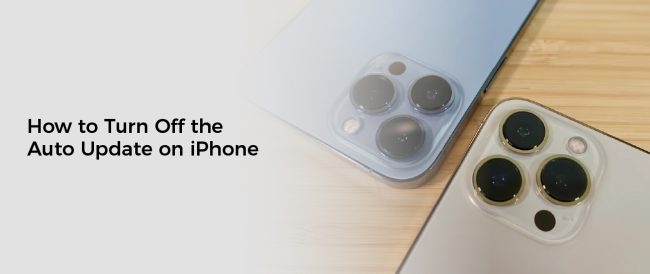When iPhones automatically update, they help to ensure timely bug fixes and smoother user experience. They also help make your phone more secure by introducing security patches and vulnerability fixes.
However, enabling this feature can cause your device to drain its battery faster than usual. This could be especially true if you’re on a limited data plan.
1. Go to Settings
If you have an iPhone, you can use the Settings app to control how often your device updates its apps and software. This can be helpful for avoiding bugs and glitches, but it can also cause your phone to eat up more battery and cellular data than you want it to.
Auto app updates have been around for several years now, and they can be a great time saver when you’re using your iPhone. Generally, they’ll add new features or fix existing problems so that your app runs better than before. But they can also be a pain when you get an update that doesn’t work properly, or removes a feature you love.
Luckily, it’s not hard to disable automatic app updates on an iPhone. All you need to do is find the setting that controls them and turn it off. Once you’ve turned them off, you can start installing your app updates manually again.
To turn off automatic iOS updates, open the Settings app and go to General. Then, scroll down and tap Software Update.
From here, select the Install iOS Updates toggle switch and tap it to turn it off. This will stop your device from installing iOS updates automatically, but it won’t stop them from downloading when connected to a Wi-Fi network.
However, you may still need to download iOS updates when you’re on a cellular network. This will consume some cellular data, but it should be enough to keep you mobile while on the go.
You can still keep your apps and other software up to date by signing in to your iCloud account on each of your devices. This way, all of your Apple devices will have the same version of the software on them and you won’t need to worry about forgetting to update your apps.
You can also choose whether your iPhone will download updates via WiFi or over cellular data. This can be useful if you have limited data on your plan or are trying to save on battery life.
2. Go to General
One of the best ways to manage software updates on your iPhone is through the Settings app. This way, you can control which applications receive updates automatically, as well as when they do.
While this feature can help you stay up to date with the latest security patches and bug fixes, it can also consume a lot of your iPhone’s battery and data. Therefore, you may want to turn it off to save your device’s battery life.
You can disable automatic software updates on an iPhone by going to the Settings app and scrolling down to General. Here, you can select the toggle next to Automatic Updates to turn it off.
By default, apps will update automatically whenever a new version of the app is available in the App Store. However, you can disable this feature by going to the Settings app on your iPhone and tapping the gray gear icon.
When you turn off the auto update, all of your apps will stop receiving automatic updates, so they will need to be updated manually instead. This can be a problem if you have a large number of apps, but it can also help you free up some space on your device.
If you need to go back to an older version of an app, you can do so by opening the App Store and locating the application you want to restore. You can then tap “Update.”
This will allow you to use the old version of the app without having to upgrade it. You can also uninstall an app if you no longer need it.
You can also disable automatic downloads on an iPhone by going to the Settings app. This can help you avoid having to download new apps, content, and software updates when your iPhone is connected to Wi-Fi.
Lastly, you can disable the badge icon on your iPhone, which shows when new software updates are available. This will prevent you from seeing the badge icon in the notification bubbles and will stop your iPhone from prompting you to install the update.
3. Go to Software Update
Automatic software updates are a great feature for iPhone users as they add functionality, improve existing features and fix bugs that might cause problems. However, they can also drain your battery and use up your mobile data if you leave them on. To prevent this, you can turn off the auto update on your iPhone.
One way to do this is by going to the Settings app and opening up General. Then, you will see a section called Downloads. Swipe down to this section and tap the toggle switch that reads “Automatic Downloads” in order to turn off the feature.
Another way to stop your iPhone from automatically downloading iOS updates is by going into the Settings app and opening up the Software Updates section. This will show you any available software updates for your device; if you have already installed the latest version, you won’t be shown any updates to install.
If you do want to enable iOS updates, you can tap the green background on the toggle switch that reads “Install iOS Updates,” and this will turn the option on again. You can then manually check for an update by clicking it, if there is one available.
You can also choose to manually download apps by opening up the App Store and tapping on an app you wish to download a new version of. This will also allow you to revert to an older version of that app if it has been updated through the app’s automatic update system.
4. Go to Updates
Your iPhone is designed to keep up with software updates so that you can get the latest features and bug fixes. This can be helpful, but there are times when you don’t want your iPhone to automatically update.
One way to turn off the auto update on an iPhone is to go to Updates in the Settings app. This will open a new screen where you can check the latest software version and how much free storage space you have.
If you want to turn off the automatic installation of iOS updates, you can do so by going to this screen and tapping on the toggle switch. If you see a white background behind the toggle switch, this means that it’s disabled and you need to click it again so that the background is green.
You can also use this page to disable the automatic downloading of apps from the App Store. This can be useful if you’re on limited cellular data or you want to save battery life by not having your phone automatically download apps.
In addition to turning off the automatic installation of iOS updates, you may also want to disable their download when your device is connected to a WiFi network. In order to do this, you will need to tap on the toggle switch for Download iOS Updates and set it to off.
After you’ve done that, your iPhone won’t be able to install iOS updates when it’s connected to a WiFi network, but it will still download them if you’re on a cellular data network. If you do need to download updates while you’re on a cellular data plan, however, it’s important to make sure that your mobile data connection is strong enough for the downloads.
You can also use the “About” section in the Settings app to check for available updates. This will open a new window where you can see the current software version, how much storage space is left, and how many apps you have installed on your phone. This information is not as thorough as the Software Update page, but it can be a handy way to stay up-to-date on the latest software versions for your iPhone.

